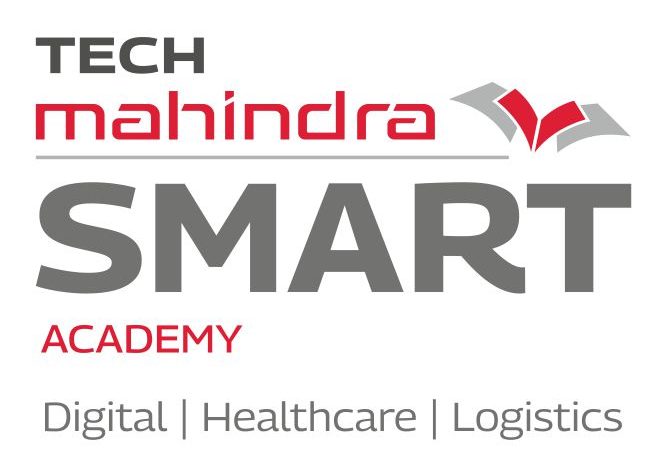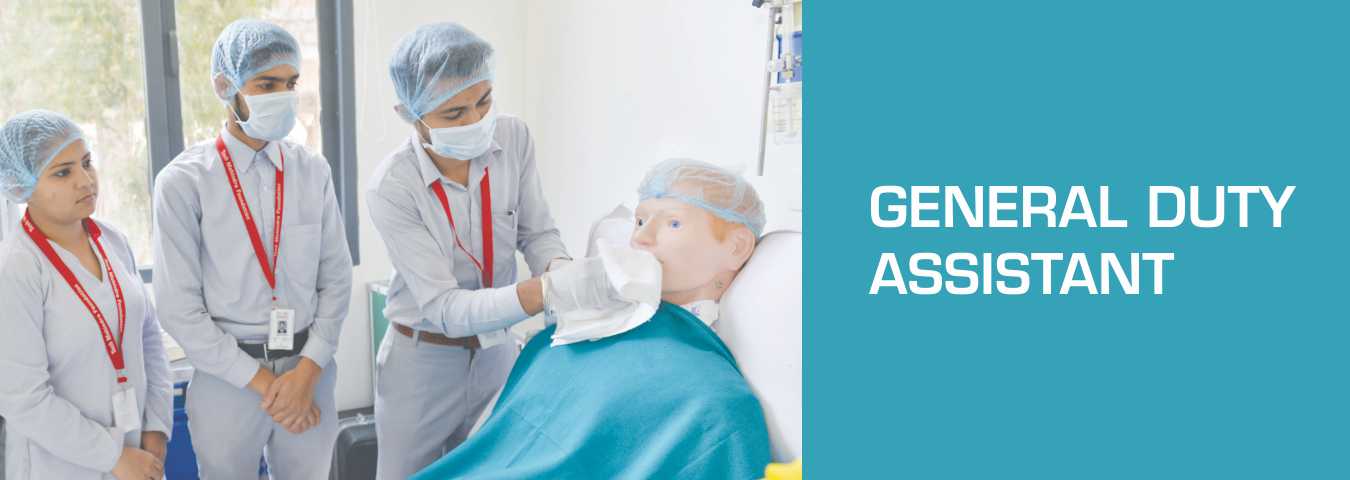Table of Contents
ToggleThe GDA course is a series of short (3-6 months) training in basic nursing and patient care for hospital and home care jobs. Often, you have to have completed 10th grade to be a part.
It comprises classroom instruction and hands-on exercises in fields such as infection control and patient safety. After undergoing a test, GDAS can earn ₹1.75- ₹ 4.0 Lakh per year, and there are vast openings for jobs in the growing healthcare sector in India.
Unlike most healthcare training programs, the General Duty Assistant (GDA) Course not only focuses on patient care but also prepares students for real-world emergency coordination. Trainees learn how to assist doctors during sudden crisis situations, manage patient data digitally, and handle modern hospital equipment. Many institutes overlook this, but mastering soft skills like empathy, communication, and patient interaction is what makes a GDA truly valuable in today’s healthcare system. With the growing use of AI-based hospital systems, future GDAs will also play a key role in bridging technology and human care – a skill few professionals currently possess.
What is a General Duty Assistant?
A General Duty Assistant (GDA) is an essential part of any healthcare support team. He or she helps nurses and doctors perform non-clinical and routine patient-care tasks. GDAS assists with baths, feeding, patient transportation, taking basic vital signs, managing bed linen, and decontaminating patient care zones.
GDA certification is competence in core healthcare practices that do not require NEET or other medical-entrance examinations.
GDA Eligibility Criteria
Academic Qualifications
Minimum Education: Most institutes take Class 10 from a recognised board, and in exceptional cases Class 8; some institutes also accept Class 8.
Age Limit: Normally, the minimum age required for aspirants is 15–17 years old.
Other Requirements
Medical Fitness: A simple health check-up demonstrating physical fitness to attend to patient-handling work is usually required.
Course Curriculum & Structure
The curriculum of the GDA program is standardized under the guidelines of Healthcare Sector Skill Council (HSSC) as well as National Skill Development Corporation (NSDC) frameworks and generally lasts from 3–6 months including:
3.1 Classroom Theory (2–4 Months)
Orientation to Healthcare Facilities: Hospital department, roles and healthcare ethics
Basic Anatomy & Physiology: Learning about human body systems pertinent to nursing care
Infection control and biomedical waste management. Accepted practices of hygiene and waste disposal
Patient Rights & Communication: Ethics, confidentiality, and interpersonal skills.
3.2 Practical & Skill Labs (1–2 Months)
Vital Signs Monitoring: Detecting pulse, temperature, respiration and blood pressure
Patient Hygiene: Procedures of bathing, oral care, grooming, and repositioning.
Safe Patient Handling: Individual use of assistive devices, transfers from bed to wheelchair, safe lifting techniques
Basic Emergency Response: First aid, fire safety, and patient evacuation mechanism.
3.3 On-Job Training (1–2 Months)
Clinical Rotations: Support in hospitals, nursing homes or hom-care settings with supervision
Record-Keeping & Reporting: Updating patient charts, incident logs, and records for use of equipment
Training Highlights for GDA Students
Apart from the core subjects, our GDA training program also focuses on unique skill areas that prepare students for real-world healthcare challenges. These additional modules not only make learning more practical but also increase employability across hospitals, clinics, and home-care services.
1. Digital Health Records & Hospital Software Training
Students are trained to manage electronic health records (EHR) and hospital software, ensuring accuracy in patient data. With most hospitals shifting to digital systems, this makes GDAs highly employable.
2. Communication & Empathy in Patient Care
Special sessions build communication, teamwork, and empathy, helping GDAs interact with patients confidently and improve overall satisfaction in healthcare.
3. Infection Control & COVID-19 Safety Protocols
Training covers PPE usage, sanitation practices, and safe handling of infectious patients, essential skills in the post-pandemic healthcare system.
4. Assistive Technology Awareness
Students gain exposure to assistive devices like oxygen concentrators, wheelchairs, and monitoring tools, preparing them for hospital and home-care roles.
5. Geriatric and Home-Based Patient Care
This module focuses on elderly and long-term patient care, including mobility, nutrition, and palliative support, matching India’s rising demand for home healthcare.
6. Introduction to Telemedicine Support
GDAs are trained to assist in virtual consultations, handle online scheduling, and maintain digital records — crucial in the growing telehealth industry.
7. Career and Professional Development Training
Workshops on resume writing, interviews, and workplace ethics prepare students to enter the job market confidently and secure employment quickly.
8. Mental Health First Aid
Students learn to recognize stress, anxiety, and depression in patients, enabling them to provide basic emotional support and compassionate care.
GDA Career Prospects & Salary Expectations
Demand & Growth
However, the demand for GDAs is increasing sharply with the fact that India’s healthcare sector is set to grow by as much as 20% in 2024 – hospitals, clinics, rehabilitation centers, home-care agencies, and public health organizations are recruiting.
रोज़गार सूची
Hospital GDA: Helping to serve ward nurses in general and specialty wards
Home-Care GDA: Special patient support on a one-to-one basis in residential settings
Clinic & Nursing-Home GDA: Carrying out basic patient procedures in small enterprises..
Salary Range
Entry Level: ₹1.75–3.0 Lakh per annum
Average: ₹3.0 – 4.0 Lakh per annum in metros
Admission Process & Fees
Application: Present a filled form (online or on-campus) with academic records and identification.
Entrance Test / Interview: Some institutes hold a simple aptitude test or a personal interview to determine suitability of the applicants.
Fee Structure:
Range: ₹10,000–30,000 in total with the amount dependent on the institute’s reputation and facilities.
SCOPE Mumbai, Thane & Pune
Scholarships / Government Schemes: Most states provide subsidized training under PMKVY or state vocational programs. This increases the number of trainees even if we exclude the expired youth.
Tips for Success
Hands-On Practice: Treat any clinical rotation seriously- Real world exposure anchors theoretical learning.
Soft Skills: Develop empathy, patience, and good communication to excel in patient facing roles.
Health & Fitness: Keep personal fitness in order to perform physically strenuous tasks safely.
Continuing Education: Occupy bridge courses for future career advancement (ANM/GNM).
निष्कर्ष
The General Duty Assistant course offers a swift pathway into India’s burgeoning healthcare workforce. In just 3–6 months, candidates gain vital nursing support skills, nationally recognized certification, and a clear trajectory for career advancement.
With strong sectoral growth and attractive entry-level salaries, GDA certification is an excellent choice for those seeking meaningful, patient-centred roles in healthcare.
पूछे जाने वाले सवाल
The GDA course trains students in patient care, basic nursing, and hospital support. It prepares them to assist doctors and nurses in hospitals and healthcare centers.
The GDA course usually lasts 6 months to 1 year, depending on the institute and training level.
Anyone who has completed Class 10 or 12 can apply for the GDA course. Basic communication and empathy skills are preferred.
GDAs may aspire to the posts of Nursing Assistant or Floor Supervisor; or pursue ANM, GNM to receive higher assignments and better pay.
Yes, trained GDAs are eligible to work in countries like UAE, UK, and Singapore, where healthcare assistants are in high demand.
It offers quick career entry, practical skills, high job demand, and opportunities in hospitals, clinics, and home healthcare services.

